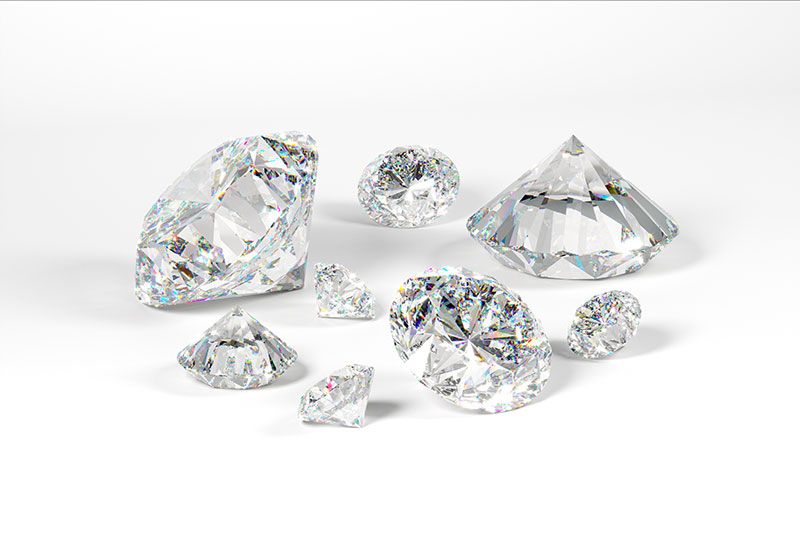The Diamond
The word diamond comes from the Greek, “Adamas,” or Latin’s “Diamas,” both of which means unconquerable. The fact that diamonds are almost indestructible makes them the perfect symbol of everlasting love. The Greeks believed that the fire of a diamond reflected the constant flame of love.

The Natural Diamond
“A Diamond is a natural mineral consisting essentially of pure carbon crystallized with a cubic structure in the isometric system. Its hardness in the Moh’s scale is 10; its specific gravity is approximately 3.52; it has a refractive index of 2,42 and it can be found in many colours.” Definition supplied by the DTC.A gemstone of this description that has been mined from the earth is the only gem that can be called a Diamond. The term “cultured” is not acceptable in conjunction with “diamond.”
Physical Properties of Diamonds
Diamonds are very simple in composition: C carbon 99.95%. They are the only inorganic gemstone that consists of only one element. Chemically it’s simple carbon. Its crystal form gives it four desirable optical properties:
Hardness
Hardest gemstone known to man. Diamond’s hardness enables it to accept a higher polish than any other gemstone, thereby making it more brilliant than any other gemstone.
Melting Point
Melting point is 6,900 degrees F -4,000 degrees C – 2 1/2 times the melting point of steel.
Expansion
Does not undergo thermal expansion (water to ice).
Reflective
Four times more reflective than glass.
The characteristics of a diamond
Below you’ll find more in-depth information about characteristics that define a diamond.
Our Social Responsibility
Learn what we and other Jewelers are doing to prevent the sale of Conflict Diamonds. All our diamonds have been obtained from reputable sources not involved in the funding of conflict and in accordance with the Kimberly Process.
